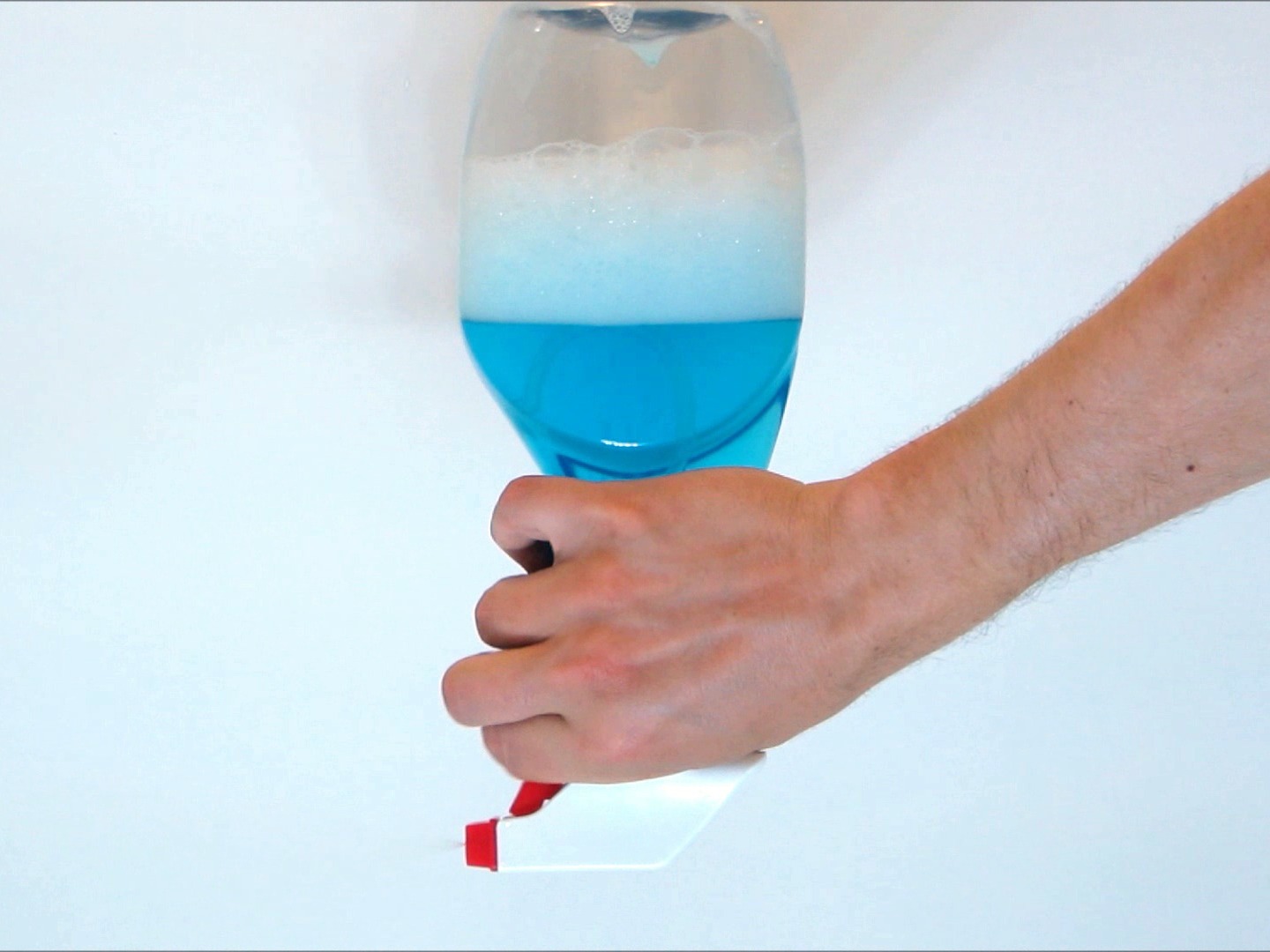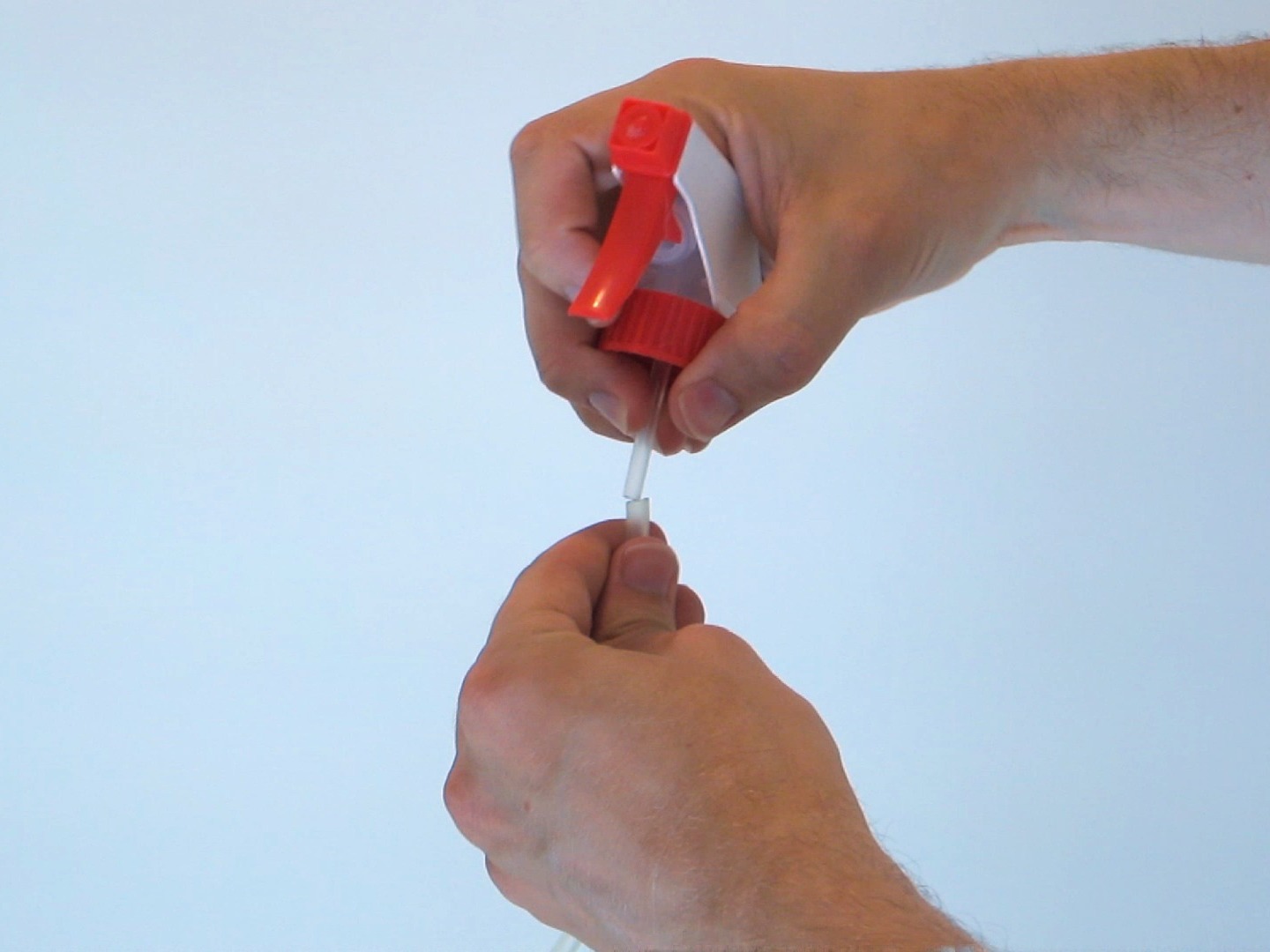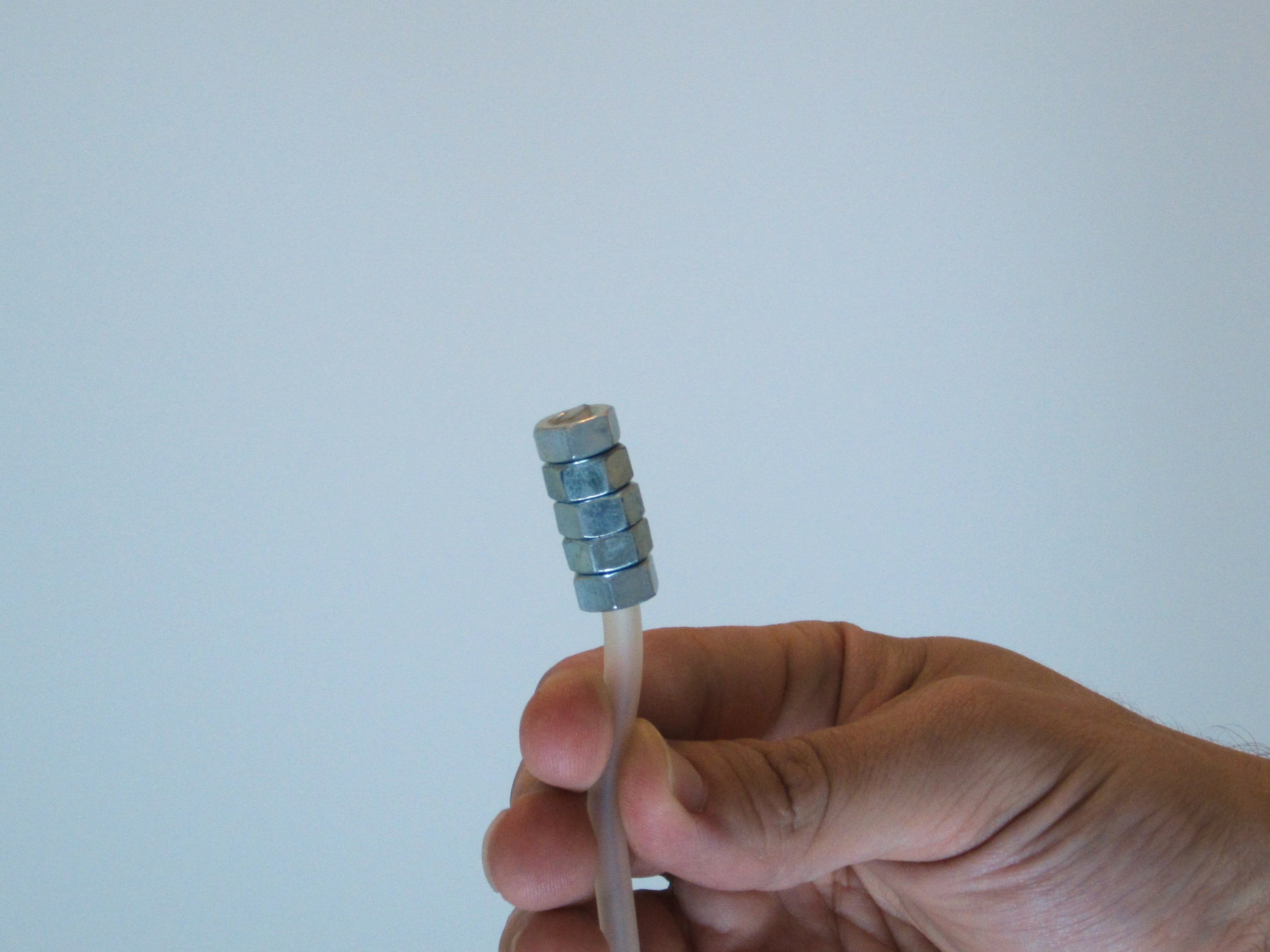Here is a video summarizing the project
Projects from Make: Magazine
Spray Bottle That Works in Any Direction/Position
Simple modifications to standard spray bottle that will let them function in any orientation.

Simple modifications to standard spray bottle that will let them function in any orientation.


Spray bottles are iconic household items. But they have some limitations. They can only operate when the end of the suction tube is submerged in the liquid. So if the fluid level gets low or if you try to spray something at an angle, the sprayer might stop working. So, I figured out a simple modification that will let them work in any orientation.
By replacing the hard suction tube with flexible tubing and adding a weight to the end of it, the suction tube will naturally fall to the lowest point of the container. This will allow end of the tube to stay submerged regardless of how the bottle is positioned. Here’s how to make it.

Spray bottle
Flexible tubing with 1/8″ inner diameter (such as aquarium airline tubing)
5 x 1/4″ stainless steel nuts (or other weight)
Scissors
glue (optional)

Cut the original suction tube on the spray bottle, leaving about 1 inch sticking out past the screw cap. Then cut the flexible tubing so that it is about 1 inch longer than the cut portion of the original suction tube.

The suction tube on a typical spray bottle has an outer diameter between 1/8″ and 3/16″. So if you use flexible tubing with an inner diameter of 1/8″, the two tubes should make a good seal without any adhesive. Just slide the flexible tubing onto the rigid tube until they are firmly held together. You will want at least 1/4″ of overlap.
If the two tubes do not make a good seal, you can use glue or caulk to help hold them together. If you need to use adhesive, first make sure that both tubes are clean and dry. Apply a thin layer to the bottom half inch of the rigid tube.
Then slide the flexible tubing onto the rigid tubing. As you do this, slowly twist the tubes to help spread the glue evenly. You will want them to overlap by at least 1/2″. Let the adhesive completely cure before continuing.

The last part to add is a weight on the end of the suction tube. I chose to use 1/4 inch stainless steel nuts because they were readily accessible and because they conveniently fit on the flexible tubing without any adhesive.
Keep in mind that steel will eventually rust. So if you use steel nuts as your weight, you will want to remove the sprayer assembly after each use so that it can dry out. Alternatively, if you have access to something that is small, dense and won’t react with the liquid, you may wish to use that as a weight instead.
The number of nuts that you will need to use will be determined by the stiffness of the flexible tubing. You want there to be enough weight on the end of the tube so that when the sprayer is turned upside down, the end of the tube will hang near the level of the screw cap. Twist nuts onto the end of the flexible tubing one at a time.
After adding each one, turn the sprayer upside down and check how low the end of the tube hangs. This is the minimum level of liquid that will still submerge the end of the tube when held upside down. Continue adding nuts until you are satisfied with this level. I used five nuts in my prototype.

Finally, fill the bottle with liquid and screw on the sprayer assembly. Then try it out. You can spray up, down and at any angle. You can even hold the bottle upside down and it still works.
Occasionally the weight or the tube may get stuck in one position. If this happens, just give the bottle a gentle shake and the weight will fall back down to liquid.
By replacing the hard suction tube with flexible tubing and adding a weight to the end of it, the suction tube will naturally fall to the lowest point of the container. This will allow end of the tube to stay submerged regardless of how the bottle is positioned.